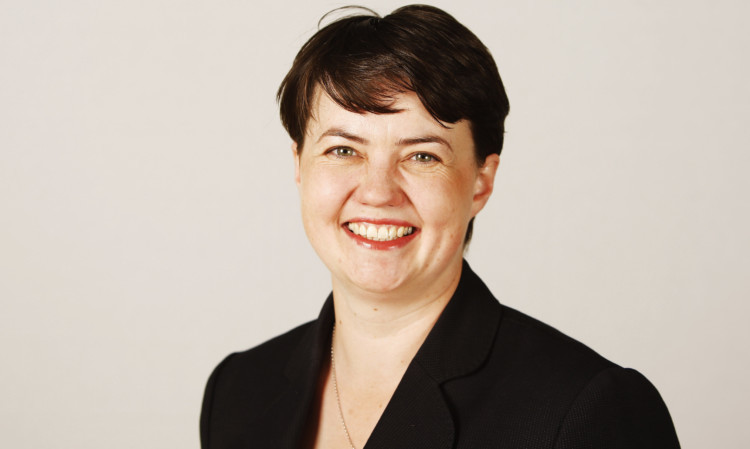
Ruth Davidson is optimistic over her party’s prospects in Scotland.
She compares it to turning around an oil tanker but her rivals would argue it’s more like raising Lazarus.
However, Scottish Conservative leader Ruth Davidson will this week open her party’s biggest spring conference in more than decade with reasons to be cheerful.
The party’s decline has been well documented since losing all 11 of its Commons seats in the 1997 Labour landslide.
But Davidson claims the changes she has made since becoming leader in 2011 are starting to pay off.
“It is beginning now to feel like we are turning the oil tanker around and that is satisfying,” she said.
“Sometimes it can be frustrating when we’re working hard to get the party whipped into shape, doing the stuff we need to do to communicate our message, get the right
candidates in place and frankly sort out the management because we were pretty amateur when I took over.
“But that is 11 by-elections, Holyrood and council, in a row where the Tory vote has gone up, the first time since 1974.
“We are in a position, certainly for the first time in my adult lifetime, where we are on the majority side of the argument on the four or five biggest issues facing the country including the independence referendum, the EU referendum and the benefits cap.”
Naturally, she doesn’t credit them, but the opportunity presented for the tough task of trying to revive the Tories north of the border is largely thanks to the SNP.
The party is learning from former Nationalist leader John Swinney’s overhaul of the SNP prior to them winning in 2007 but the more immediate goal is to be the tub-thumping, flag-waving pro-Union face of the independence referendum campaign.
More than 80,000 people have joined the Conservative Friends of the Union campaign against independence this is seven times greater than the party’s membership and party strategists eye the referendum, resulting in a No vote, as a once-in-a-generation chance to rehabilitate the Tory brand in Scotland.
Davidson explains: “The referendum has given us permission to speak to people who had stop listening to us and who didn’t want to listen to us. It is about being able to have that conversation with people and you then see they agree with a lot of what you have to say on other issues.
“Some of these people, having seen a bit more about us, would be more open to backing the party than they had been previously.”
New party chairman Richard Keen QC last month said the Tories could be in power within a decade and Davidson jokingly questioned his ambition for saying it would take that long.
She continued: “The electoral maths in Holyrood means that any combination of options is possible in 2016. Look at what has happened to the SNP in the last decade.
“You win and lose elections in yards. We got 412,000 votes in 2010 and got one seat, the Lib Dems got 465,000 votes and got 11 seats.
“The reason the SNP won in 2007 by a single seat was because John Swinney had been leader and sorted out their electoral machine.
“On these small issues the fates of nations can turn so it is a big issue.”
One of the more immediate problems facing Davidson is how unpopular the current Tory-led UK Government is, a point which will be hammered home with a series of demonstrations at this weekend’s conference in Edinburgh.
It is perhaps with this in mind she ducks any predictions on the 2015 General Election, but adds: “I think we will see a lot of the work we have been doing pay off most visibly in the 2016 Scottish election, partly because of the voting system as it rewards the work you do everywhere. I think that will be the one where people go ‘wow’.”
One hope for the party’s 2015 prospects is the very well received use of American-style ‘open primary’ election system where everyone registered in a constituency to vote is given their say on who will be the Tory candidate.
Davidson continued: “We are bringing more people to politics with our primaries. Our Holyrood list rankings for 2016 is going to involve every Tory pledge that is 300,000 voters, the biggest democratisation process of any party in this country.
“It is about involving people in the process earlier. They feel they have input into what political parties do and maybe in our own small way we will try and get past some of the anti-politics feeling in Scotland.
“We don’t know if it will work, but that makes it hugely exciting.”

Enjoy the convenience of having The Sunday Post delivered as a digital ePaper straight to your smartphone, tablet or computer.
Subscribe for only £5.49 a month and enjoy all the benefits of the printed paper as a digital replica.
Subscribe